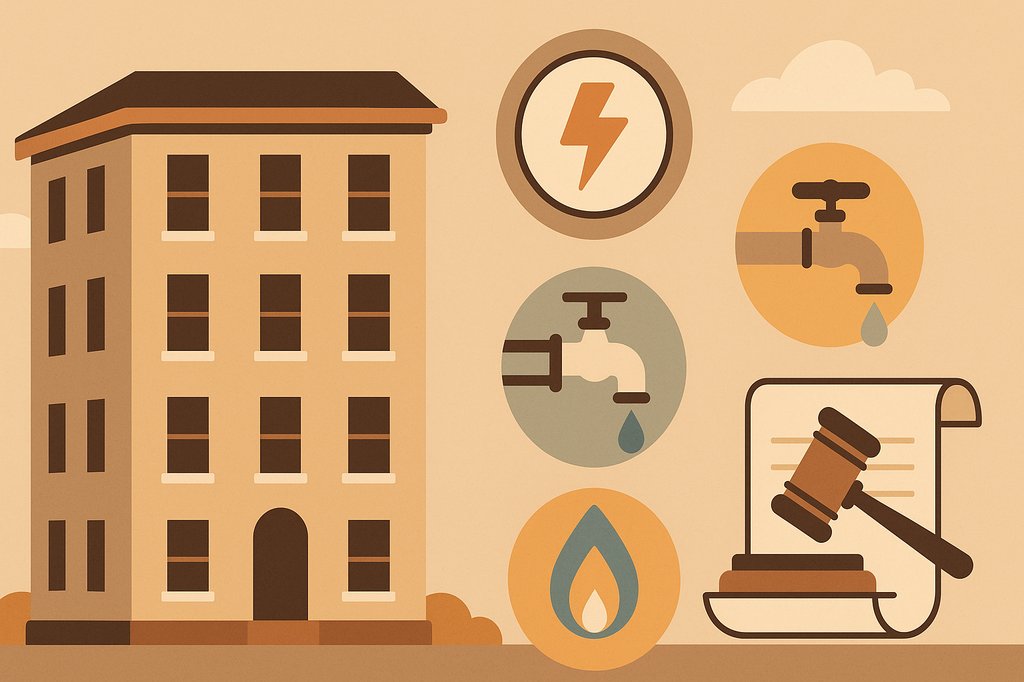BREAKING NEWS: Rent Control is Here to Stay in California

On Tuesday, October 8th, California Governor Newsom signed into law Assembly Bill 1482 imposing rent control and just-cause eviction rules and fees across California. After a long battle within the state, rental properties not currently covered by stricter rent control provisions will need to adapt to the upcoming changes by January 1st, 2020.
Assembly Bill 1482 (also known as the Tenant Protection Act of 2019) will go into effect on January 1st, 2020 with the following:
Annual rent increases are limited to 5%, plus a change in the Consumer Price Index (CPI), for up to a maximum increase of 10%
Rent increases between March 15th, 2019 and January 1st,
2020 above the 5% plus CPI restrictions will need to adjust the rent
down to the rental amount as of March 15, 2019 plus the 5% and CPI or by
10% – whichever is lower as of January 1st, 2020. You will not be required to provide a refund to the renter for the rent collected before January 1st.
For
vacancies, you can establish any rent amount you desire, however, once a
new renter has moved in, all rent increases must comply with these rent
cap restrictions.
Imposes “Just Cause” eviction rules for renters living in rental properties for 12 months (or 24 months if an additional renter moves into the same property) on and after January 1st, 2020
This provision divides evictions by at-fault and no-fault. To perform an at-fault eviction, you must provide a permissible reason and time period for the renter to cure the violation (before issuing a notice of termination). If the violation isn’t fixed within the set time frame, owners can then provide a 3-day notice to quit.
Permissible at-fault eviction reasons:
- Failure to pay the rent
- Breach of the lease terms
- Maintaining, committing, or permitting a nuisance (see your local nuisance ordinance laws)
- Committing waste (keeping the property clean)
- Renter refusal to execute a written lease extension or renewal on or after January 1st, 2020
- Criminal activity by the renter on the property
- Assigning or subletting the property, in violation of the lease
- Refusing the rental property owner access to the property
- Using the property for unlawful purposes
- A property’s employee (like an on-site manager), agent or licensee’s failure to vacate after employment termination
- Failure to deliver possession of the property following a renter’s lease termination notice, which the property owner accepts in writing
No-fault eviction reasons:
- Intent
by the owner or relative of the owner to occupy the unit (relatives are
the owner’s spouse, domestic partner, children, grandchildren, parents
or grandparents)
For leases entered into on or after July 1st, 2020, the renter will need to agree with the lease termination – in writing – for the owner to occupy the unit, or the lease would need to include a lease termination for owner occupancy provision! - Withdrawal of the property from the rental market
- Intent to demolish or substantially remodel the property
- If the owner is complying with a local ordinance, court order or other government entity resulting in the need to vacate the property
Requires relocation assistance or a rent waiver equal to one month’s rent for “no-fault” evictions
For “no-fault” evictions, the renter is entitled to relocation assistance or a rent waiver – equal to one month’s rent. You must notify the renter of their right to relocation assistance or a rent waiver on the notice of termination, and this must be paid within 15 calendar days of the notice. If the property owner does not pay the relocation assistance or rent waiver the lease termination is void.
If your rental property is subject to this law, for lease agreements started or renewed on or after July 1st, 2020, you must provide the following notice or lease addendum:
“California Law limits the amount your rent can be increased. See Section 1947.12 of the Civil Code for more information. California law also provides that after all of the tenants have continuously and lawfully occupied the property for 12 months or more or at least one of the tenants has continuously and lawfully occupied the property for 24 months or more, a landlord must provide a statement of cause in any notice to terminate a tenancy. See Section 1946.2 of the Civil Code for more information.”
If provided as a lease notice, the copy must be signed by the renter.
Rental properties exempted from this law are owner-occupied duplexes, properties build within the last 15 years, single-family homes, and housing subject to more restrictive rent control ordinances. If your property is exempt, you must provide your renters with written notice of this, stating:
“This property is not subject to the rent limits imposed by Section 1947.12 of the Civil Code and is not subject to the just-cause requirements of Section 1946.2 of the Civil Code. This property meets the requirements of Sections 1947.12 (d) (5) and 1946.2 (e)(8) of the Civil Code and the owner is not any of the following: (1) a real estate investment trust, as defined by Section 856 of the Internal Revenue Code; (2) a corporation; or (3) a limited liability company in which at least one member is a corporation.”
This notice must be included in rental agreements started on or after July 1st, 2020.
About Becky Bower
Becky Bower is the Content Strategist here at the ApplyConnect Blog. She holds a degree in English, with a focus in creative writing from CSU Channel Islands. Her biggest weakness is cake and favorite superhero is Batman.







